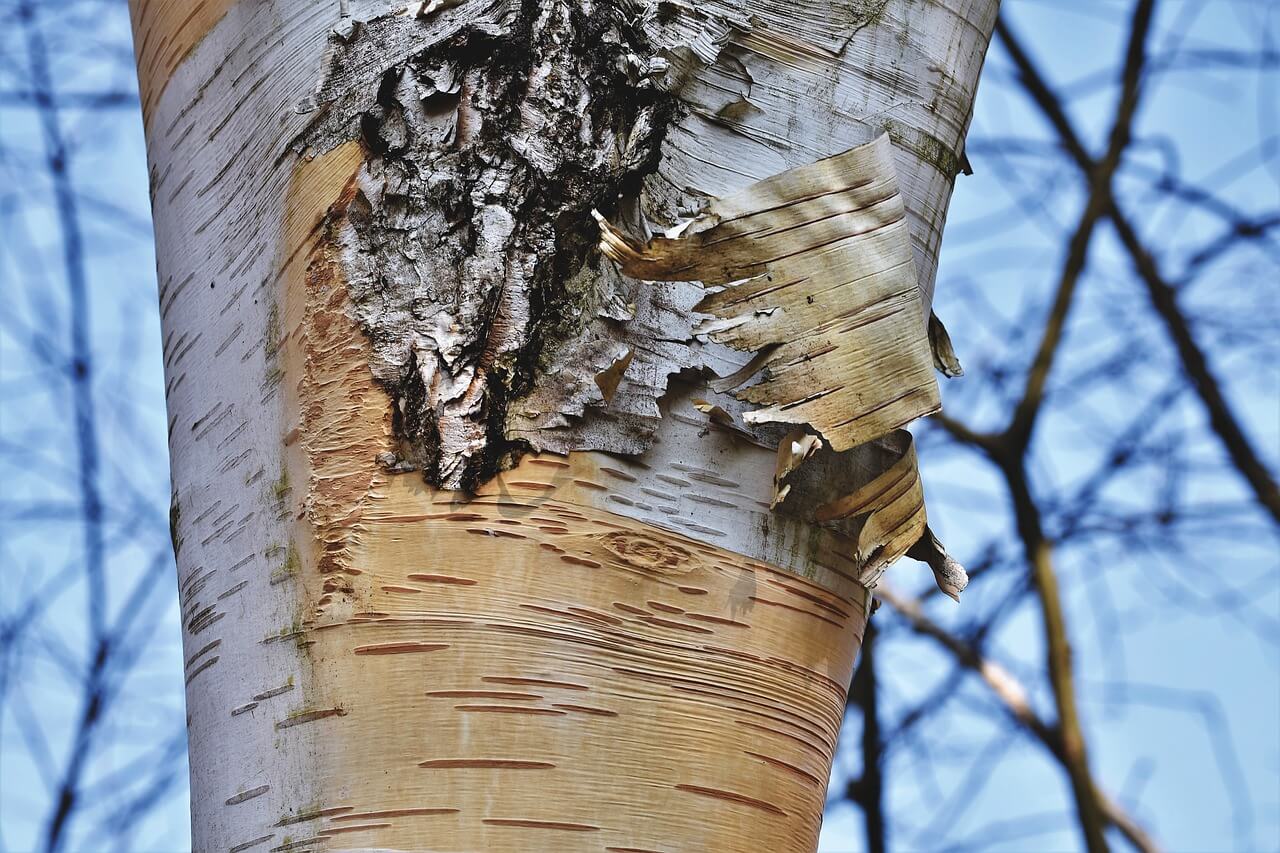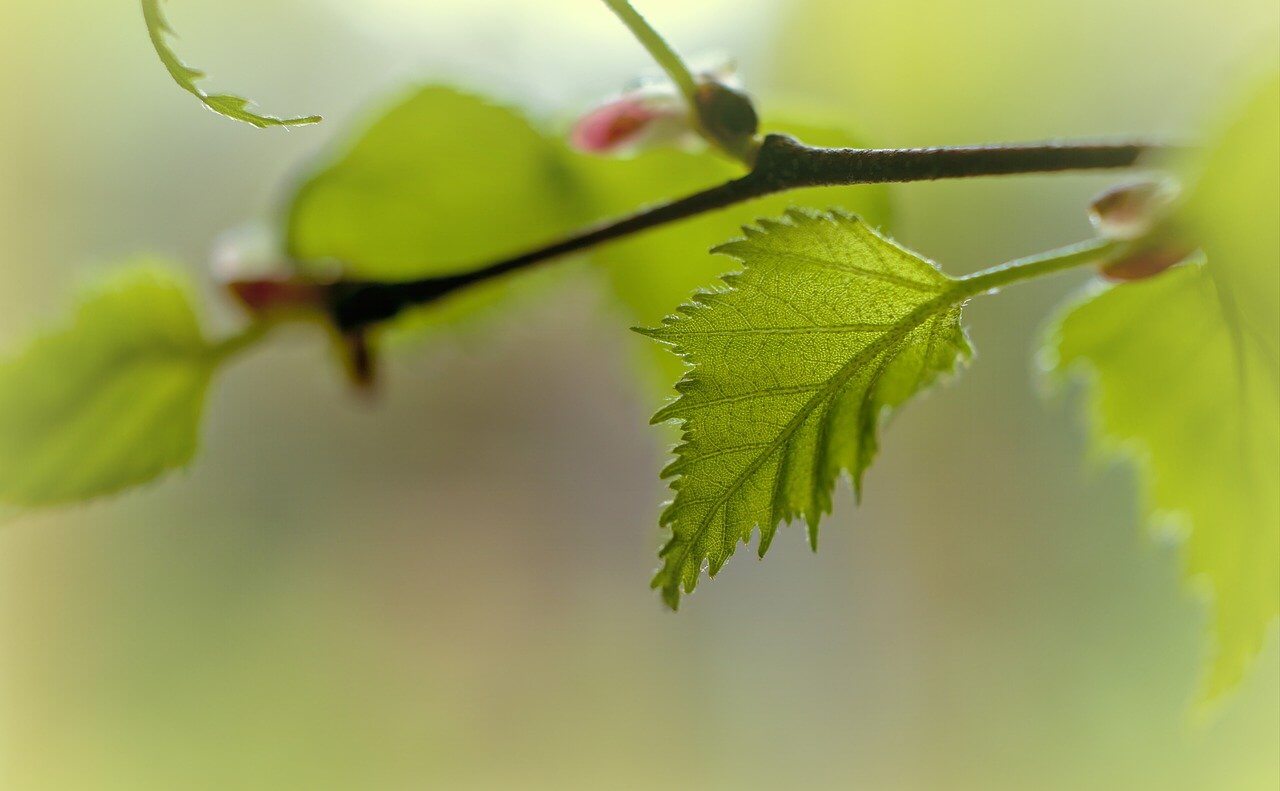If your birch tree is showing signs of disease or rot, is it best to cut the tree down? Or is there anything you can do to save it? In this article, we’ll discuss how to save a dying birch tree, as well as how to know if your tree is dying in the first place.
What You'll Learn Today
How Do You Know if a Birch Tree is Dying?

Birch trees are very sensitive; if they aren’t taken care of, or if they are subjected to pests or harsh conditions, they will begin to die.
But how can you tell if your tree’s health is declining? Is it possible to find out that your birch tree is dying before it’s too late?
The good news is, there are many signs of decline birch trees will show, and if you know what you’re looking for, most of the time, you’ll be able to reverse the damage.
Here are some of the main things you should be looking for:
- Mushrooms growing on the tree: if you see mushrooms growing on tree trunks or exposed roots, this is a sure sign of disease or rot. Once the mushrooms are visible on the surface, the mushroom cells (mycelium) have already taken over that section of the tree, and it will need to be removed.
- Large patches of brown bark: birch trees are known for their white or silvery bark. It is natural in some birch species for this bark to peel away, but if you see large areas of mottled brown or gray bark, especially near the base of the trunk, this could mean that the wood underneath is rotting or diseased.
- Significant dead branches: any large dead branches should be removed from your tree as soon as possible. Not only do they pose a threat to people and structures, but they may be a sign of disease that could spread to other parts of the tree.
- Obvious patches of rot: anything that looks “off” could potentially mean the tree is rotting. Tarry black patches, soft spots, or gashes that don’t appear to scar over normally are all common signs of rot in birch trees.
- Pest infestation: bronze birch borers and aphids are common pests of the birch tree. If you notice lots of these bugs on your tree branches, or you notice sections of the tree dying, you may have a pest infestation.
- Root damage: birch trees have very shallow root systems, and sections of their roots are often left exposed due to landscaping or erosion. If your tree is declining and you’re not sure why, check any exposed roots for signs of damage or disease.
- Yellow foliage out of season: Birch tree leaves turn yellow naturally during the fall, but if you notice them changing color in the spring or summer, this may be a sign of drought or malnutrition in the tree.
How Do You Revive a Dying Birch Tree?
As noted above, it is possible to save your birch tree if you catch the problem early enough. Check out the following video for some tips for saving your dying birch:
Here are some steps to take that may help you save your tree:
- Prune any dead or diseased branches as soon as possible. It is best to prune birch trees during the late spring through early fall, as they may bleed sap if pruned during their dormant season.
Depending on the size of the branches, you may need to have them removed professionally.
- Apply fungicide or insecticide to get rid of pests or treat specific diseases. Again, you may need help from a professional who will be able to diagnose the problem and recommend specific products to use.
- If you’re not sure what’s going on with your tree, it may help to water and fertilize it regularly. This is especially during periods of drought and heat, as birch trees depend on having plenty of water and nutrients.
Sometimes, the tree may be beyond saving.
Birch trees often have two or three trunks growing from the root base, and if all of these main trunks are unhealthy, the tree will most likely die completely over time.
If the tree has only one trunk, and it is infested with mushrooms or has large areas of rot, there won’t be much you can do to reverse the problem.
As the saying goes, prevention is the best medicine.
Care for your tree regularly by watering and fertilizing it, mulching the roots, or planting low-growing plants around the tree’s base to keep the roots shaded.
Remove any dead or diseased parts as they present to keep them from spreading, and watch for pests so you can deal with them before they become a problem.
Do Birch Trees Grow Back?

Birch trees will grow back after a certain amount of damage, but they may be permanently weakened.
For example, if you have a tree with three main trunks, and two of them are rotted out, you may be able to extend the tree’s life by removing the two diseased sections of the tree. The remaining section will continue to live, but it may be more prone to damage and disease over time.
The same is true if you have your tree topped, if it is severely damaged in a storm, or if the tree is nearly killed by pests or disease.
It is possible for most birch trees to come back from being partially killed if you care for them appropriately as described above; but there may be nothing you can do, as they will not come back if they are too far gone.
Once death or decay has reached all main trunks, there is little you can do but take the tree down so it doesn’t become a hazard.
Why Do the Tops of Birch Trees Die?
If you notice the upper sections of your birch dying off, while the lower parts continue to grow, you may be dealing with bronze birch borers.
According to the University of Washington, these pest beetles bore into the wood of birch trees, creating mazes that disrupt the flow of food and water in the tree.
Bronze birch borer infestations kill birch trees slowly, starting from the top and working their way down.
If the upper branches of your birch tree are dying, it’s best to call an arborist to apply a pest killer and remove the dead branches.
Conclusion
There are a number of issues that may cause your birch tree to die. Fortunately, if you can identify and treat the problem early enough, there’s a good chance you’ll be able to save the tree.
Does too much rain cause the leaves of a birch tree to turn yellow or dead?
Where can I find an arborist?
Global warming. I have 5 birch trees in my back yard. It was the hottest to date last summer and I observed my 5 trees suffering. What can I do? I don’t have much $.
Good advise, working on a 30′ silver birch now to save it’s beautiful life. Greatly appreciate your advise, arborists here charge over the top so we’re continuing to research, all pro advise welcome. Thanks
We have a birch tree that was healthy with leaves last year. This year after a really cold winter the tree now has not bloomed. Could it possibly come back. Its a mystery to us. We had another one a few years ago die slowly from storms and now weather but this has all its branches and no leaves. It does have small tips which are pliable. Any info is appreciated. Thanks
Today i may have saved a birch….underwater for a year she was completely soaked and rotting on parts of her trunk. Using the native harvesting method during the may/june specific window for birch heart (they have their heart wood on the outside and bark or viens in the middle), imo. I gave a tobacco offering. Otherwise known as a mega dose of niacin at the roots, and covered in sand to protect. I also added some standard sugar to a sand mix and covered and protected the roots and tobacco…i really hope she lives! She had no leaves last year (under water), give her a prayer for please. It only took a small kitchen knife, putty knife (to scrap away the rot) and a great afternoon. Pics below. Any words of advice or kinds thoughts would be appreciated it. She is a special tree…we both did a little crying.
No to little water